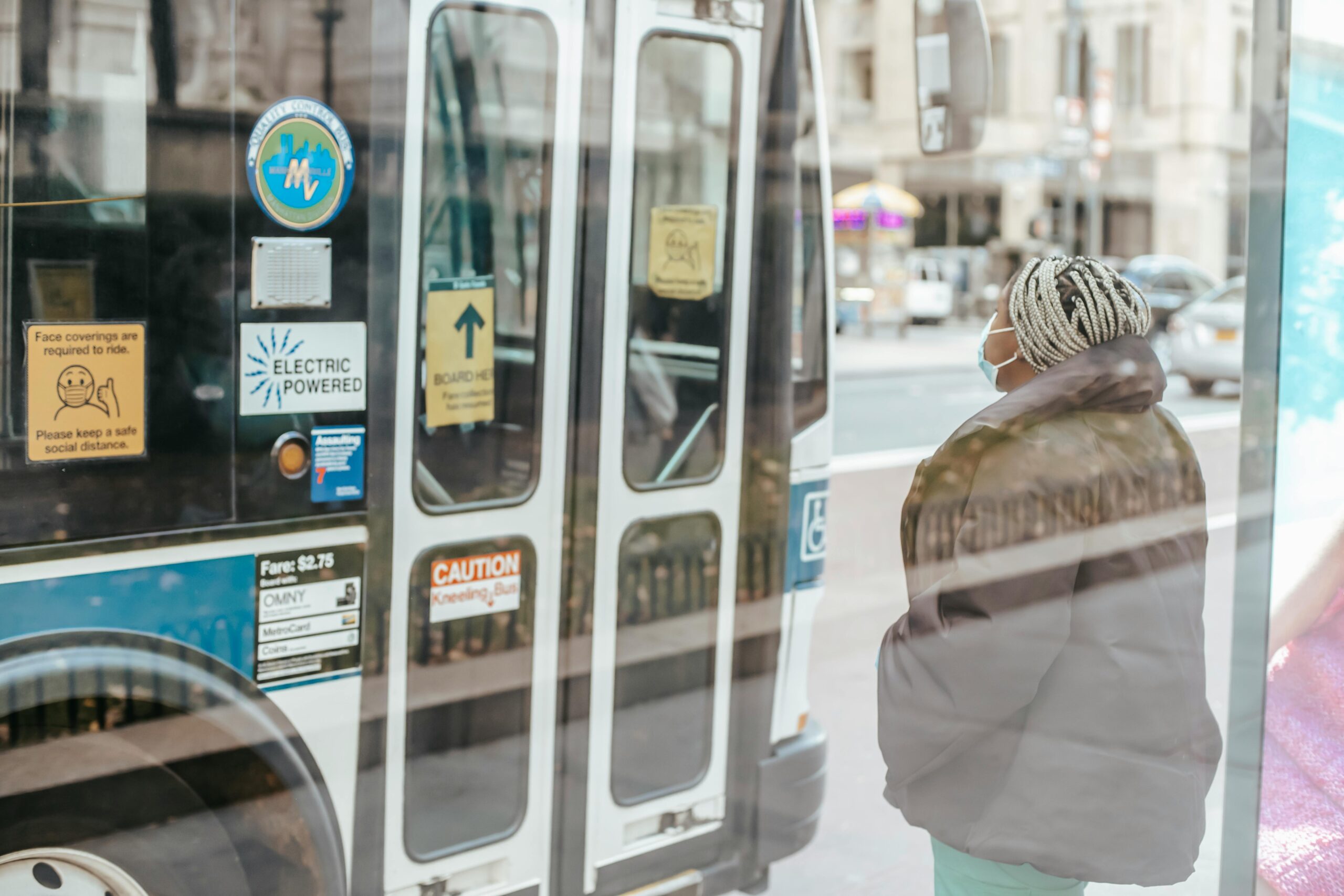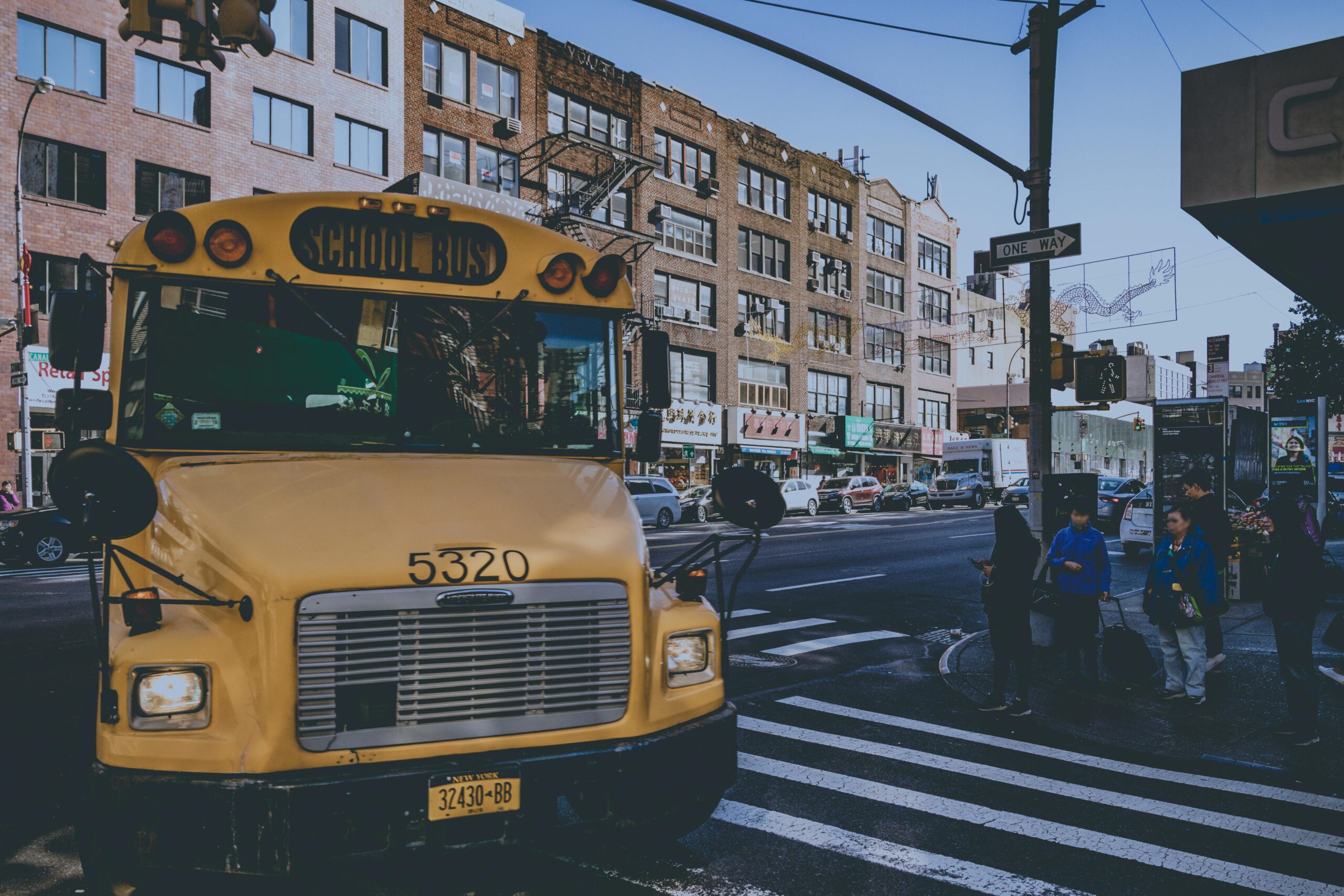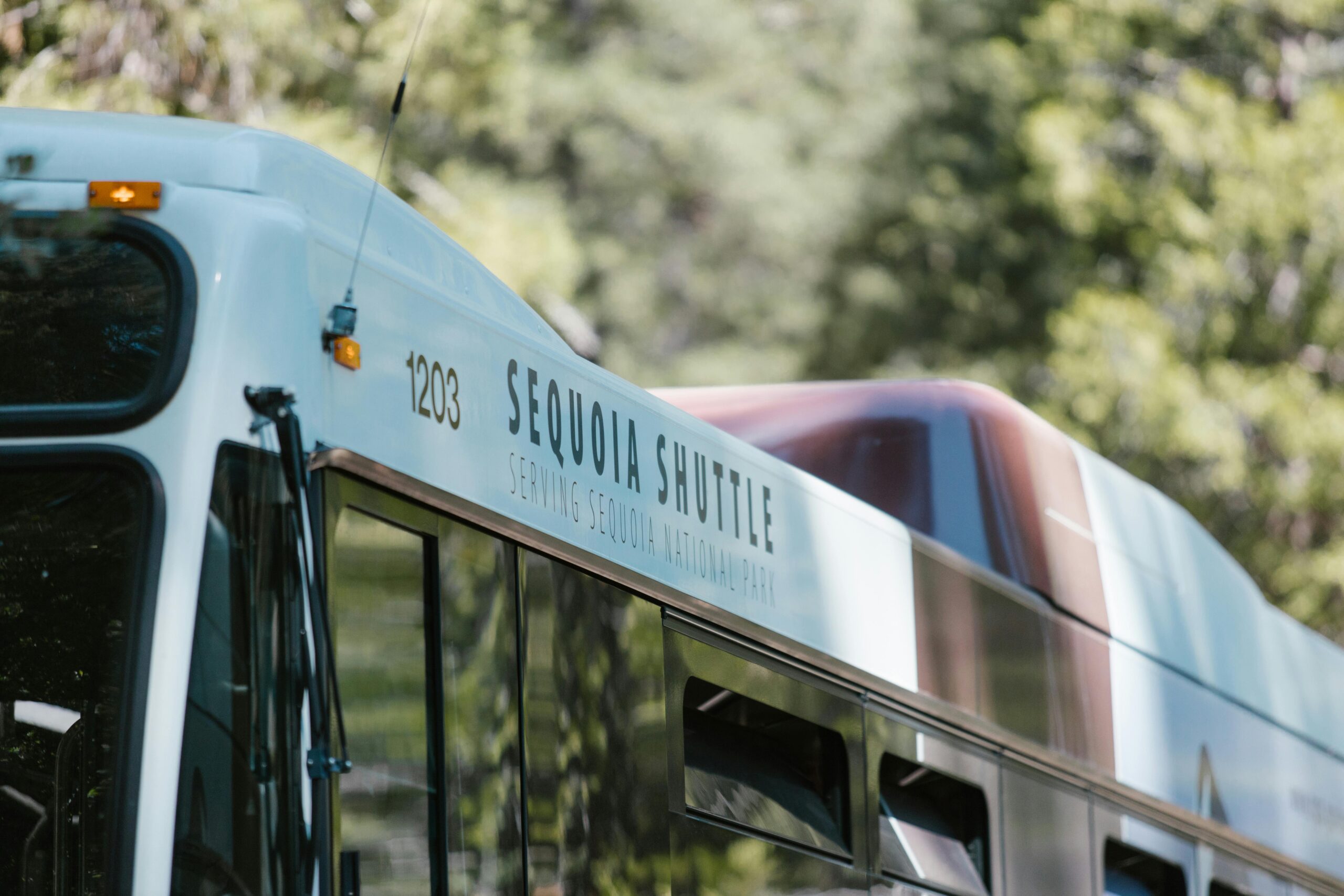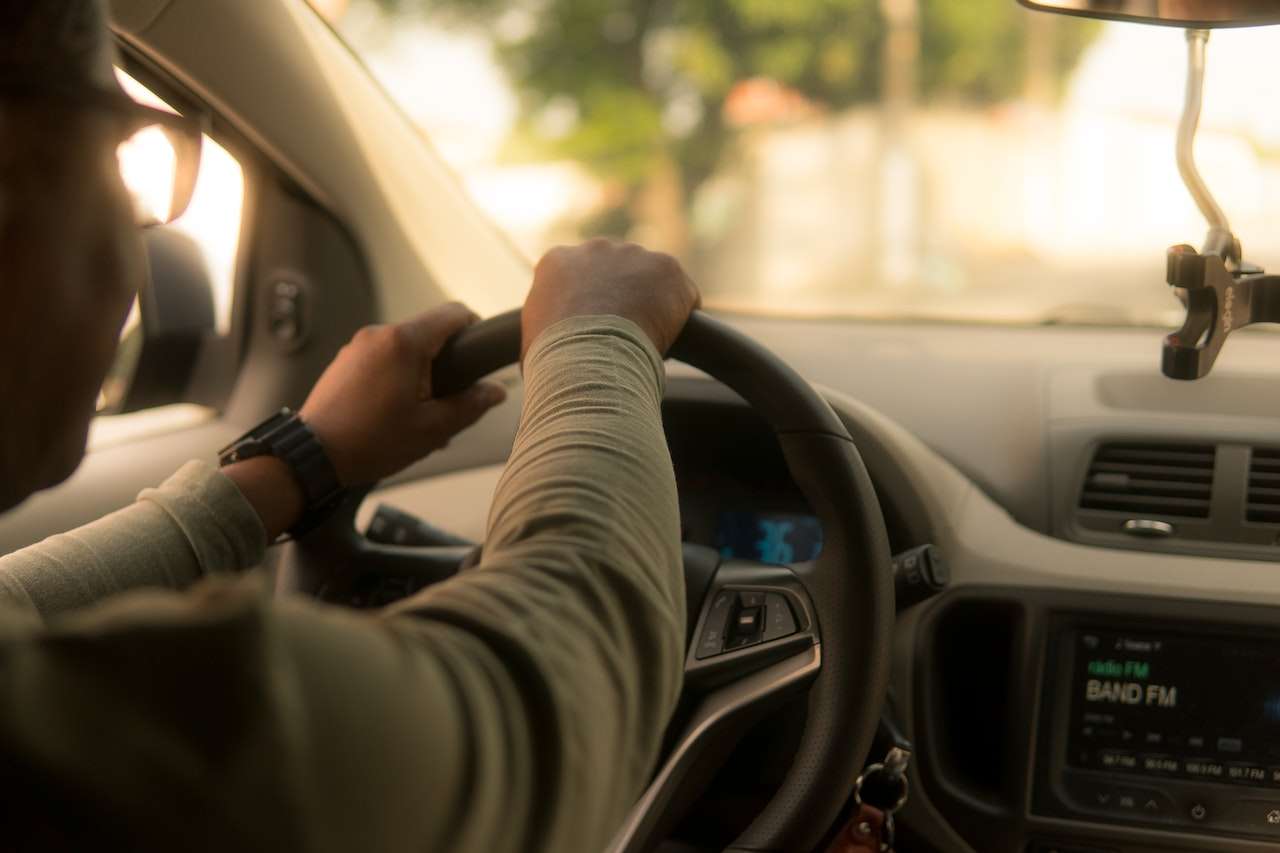New York City – the city that never sleeps. A concrete jungle brimming with iconic sights, pulsating energy, and a relentless pace. But amidst the towering skyscrapers and the yellow cabs, a vital network throbs quietly: the New York Bus system.
Your Everyday Companion:
While the subways might steal the spotlight, New York bus is the silent workhorses, weaving their way through the city’s intricate grid, ferrying millions to their destinations daily. This extensive network, operated by the Metropolitan Transportation Authority (MTA), serves as the backbone of public transportation in the outer boroughs and connects seamlessly with the subway system, making it an essential part of any New Yorker’s life.
A Ride Through Options:
MTA New York bus:
The MTA operates a massive fleet of buses, categorized into local and express routes. Local buses make frequent stops, catering to shorter commutes within a neighborhood. Express buses, on the other hand, zip through the city with fewer stops, ideal for traversing longer distances.
Intercity Buses:
New York City also serves as a major hub for intercity travel. Popular providers like Greyhound, Megabus, and Trailways offer comfortable and affordable options for those arriving in or departing from the city.
Planning Your New York bus Journey:
Ticketing and Fares: Hopping on a New York bus is convenient and affordable. The primary payment method is the MetroCard, a reloadable fare card that grants access to both buses and the subway system. MetroCard offers free transfers within a two-hour window, making it economical for navigating the city. Cash payments are also accepted, but with limitations (no transfers) and require exact change.
For detailed fare information and MetroCard options, visit the official MTA website: https://new.mta.info/about.
Charting Your Course:
Planning your bus commute is a breeze. The MTA website and app offer real-time bus tracking and detailed route maps. Additionally, popular navigation apps like Google Maps integrate live bus information, allowing you to track arrival times and plan your journey efficiently.
Accessibility:
The MTA is committed to providing accessible transportation. Most buses are equipped with ramps and designated areas for wheelchairs and mobility aids. For further information and resources, refer to the MTA’s accessibility guide: https://new.mta.info/accessibility.
Riding Like a Pro:
Etiquette Matters: New York might be fast-paced, but bus etiquette ensures a smooth ride for everyone. Wait in designated boarding areas, allow passengers to disembark before boarding, and give up seats to those in need.
Safety First: Always hold on to railings while the New York bus is moving, and be aware of your surroundings.
Beyond the Buses:
Connecting the Dots: The beauty of the New York City transportation system lies in its interconnectedness. Using your MetroCard, you can seamlessly transfer between buses and the subway, allowing you to navigate any corner of the city efficiently.
Alternative Routes:
For those seeking alternative options, New York offers a variety of transportation choices. Taxis, ridesharing services like Uber and Lyft, and even ferries are readily available, catering to different needs and preferences.
The Final Whistle:
New York bus offers a reliable, affordable, and accessible way to navigate the city. With a little planning and adherence to basic etiquette, you can hop on the bus network and experience the electric pulse of New York City, one stop at a time. So, plan your route, grab your MetroCard, and get ready to explore the Big Apple!

Decoding the MTA Maze: A Guide to New York bus Types
New York City’s iconic yellow cabs might steal the show, but the true workhorse of the city’s transportation system is the extensive MTA New York bus network. Operated by the Metropolitan Transportation Authority (MTA), these buses weave their way through every corner of the five boroughs, carrying millions to their destinations daily.
Understanding the different types of MTA buses can significantly enhance your NYC experience. Buckle up, and let’s navigate the diverse options this network offers:
1. Local Buses: Your Neighborhood Navigators
Frequent Stops: Local buses, also known as Limited-Stop (LS) routes, are the backbone of the MTA network. They operate within specific neighborhoods, making frequent stops at designated bus stops along the way.
Ideal for Short Commutes: Local buses cater to shorter trips within a particular area. Think of them as your friendly neighborhood shuttles, perfect for running errands, visiting local attractions, or connecting to nearby subway stations.
2. Express Buses: Speeding Through the City
Fewer Stops, Faster Travel: Express buses, also known as Select Bus Service (SBS) routes, prioritize speed and efficiency. They make fewer stops compared to local buses, focusing on major thoroughfares to connect key destinations across longer distances.
Time-Savers for Longer Journeys: If you need to travel across boroughs or navigate a significant distance within the city, express buses are your go-to option. They can shave off valuable time from your commute, especially during rush hour.
3. Limited Buses: Finding the Balance
A Middle Ground: Limited buses (LTD) offer a compromise between local and express routes. They make fewer stops than local buses but more than express buses, striking a balance between speed and comprehensive coverage.
Suitable for Moderate Distances: Limited buses are ideal for navigating slightly longer distances within a borough or connecting to specific areas without the extensive stop frequency of local routes.
4. Special Routes: Catering to Specific Needs
Meeting Specialized Demands: The MTA operates a variety of special routes catering to specific needs. These include:
Night owls: Night owls rejoice! The MTA operates dedicated night bus routes (NM) throughout the night, ensuring safe and reliable transportation even after the subways close.
Weekend warriors: Weekender buses (W) provide additional service on weekends and holidays, making exploration during these times a breeze.
Special events: During major events or road closures, the MTA deploys special event buses (SE) to ensure smooth transportation and minimize disruption.
5. MTA Select New York bus Service (SBS): A Premium Experience
Dedicated Lanes and Amenities: Launched in 2008, the MTA’s Select Bus Service (SBS) offers a premium bus experience. SBS routes operate on designated bus lanes, separate from regular traffic, significantly reducing travel time. Additionally, SBS buses boast features like off-board fare collection, allowing for faster boarding and smoother passenger flow.
Choosing Your Ride:
Understanding these different MTA New York bus types empowers you to make informed decisions about your commute.
For short trips within a neighborhood: Local buses are your best bet.
Need to cover longer distances quickly? Express buses are the way to go.
Craving a balance between speed and coverage? Opt for limited buses.
Traveling at night or on weekends? Special routes have you covered.
Seeking a faster and more convenient experience? Look for SBS routes operating on your desired path.
By familiarizing yourself with the various MTA New York bus options, you can navigate the dynamic streets of New York City with ease, transforming your daily commute or weekend exploration into a smooth and efficient experience.
Conquering the Concrete Jungle: Planning Your New York Bus Trip
New York City pulsates with an energy unlike any other. Whether you’re a seasoned New Yorker or a wide-eyed visitor, navigating the city can be daunting. But fear not, for the ubiquitous New York bus network stands ready to be your trusty companion. With a little planning and this guide in hand, you’ll be cruising the streets like a local in no time.
Equipping Yourself: Ticketing and Fares
The MetroCard is your key to unlocking the New York bus system. This reloadable fare card offers a convenient and economical way to travel.
MetroCard Magic: The beauty of the MetroCard lies in its transfer functionality. Within a two-hour window, you can seamlessly switch between buses and the subway system using a single swipe, maximizing your travel options without additional charges. This makes exploring different areas of the city a breeze.
Cash Option with Caveats: While MetroCard reigns supreme, cash payments are accepted on a limited basis. However, keep in mind that exact change is required, and no transfers are available when paying by cash.
For the latest fare information and MetroCard options, visit the official MTA website: https://new.mta.info/fares. Pro tip: Consider purchasing an unlimited ride MetroCard if you plan on making frequent trips during your stay.
Charting Your Course: Finding the Right Route
Planning your New York bus commute is no longer an exercise in frustration. The MTA offers a plethora of resources to make your journey smooth sailing:
The Official MTA Website: This comprehensive website (https://new.mta.info/bus) serves as your one-stop shop for all things MTA buses. Explore interactive maps, access real-time bus arrival information, and even download detailed route descriptions.
The MTA App: For on-the-go convenience, download the user-friendly MTA app. This app mirrors the functionality of the website, allowing you to plan your trip, track buses in real time, and purchase MetroCards directly from your phone.
Beyond the Official Resources:
Third-party apps like Google Maps can also be valuable companions. While not directly affiliated with the MTA, these apps often integrate live bus information, providing you with estimated arrival times and allowing you to visualize your route efficiently.
Accessibility for All:
The MTA is committed to providing accessible transportation for everyone. Most buses are equipped with ramps and designated areas for wheelchairs and mobility aids. Additionally, trained personnel are available to assist passengers with boarding and disembarking.
For further information and resources regarding MTA accessibility services, refer to their comprehensive guide: [invalid URL removed].
Additional Tips for a Smooth Ride:
Plan ahead: Familiarize yourself with the different bus routes and choose the one that best suits your needs. Utilize the resources mentioned above to plan your trip in advance.
Be prepared: Have your MetroCard or exact change readily available to avoid delays.
Mind the bus stop etiquette: Wait in designated boarding areas, allow passengers to disembark before boarding, and be mindful of others.
Ask for help: If you’re unsure about your route or have any questions, don’t hesitate to ask the bus driver or fellow passengers for assistance.
Riding with Confidence:
By following these tips and familiarizing yourself with the resources available, you can navigate the New York bus system with confidence. Remember, the extensive MTA network offers a reliable, affordable, and accessible way to explore the Big Apple. So, grab your MetroCard, plan your route, and get ready to experience the city’s vibrant energy, one bus stop at a time.

Mastering the Ride: New York Bus Etiquette and Safety Tips
New York City’s iconic yellow buses weave through the concrete jungle, carrying millions to their destinations daily. While the extensive network offers a convenient and affordable way to explore the city, navigating the etiquette and ensuring a safe ride are crucial aspects of becoming a pro.
Etiquette Essentials: Sharing the Ride Smoothly
New York might be a fast-paced city, but a few basic courtesy practices ensure a smooth and pleasant experience for everyone on board:
Queue Up: Form a neat line at designated bus stops, allowing passengers to disembark before you board. This prevents overcrowding and maintains order.
Respect Personal Space: Avoid crowding fellow passengers. Remember, personal space is a precious commodity in the bustling city, and maintaining it ensures everyone has a comfortable ride.
Yield Your Seat: If you notice someone in need, like elderly passengers, individuals with disabilities, or pregnant women, kindly offer your seat. This small gesture goes a long way in promoting a considerate and inclusive environment.
Keep the Noise Down: While using headphones is perfectly acceptable, avoid playing loud music or engaging in disruptive conversations that might disturb other passengers.
Be Aware of Your Surroundings: Keep an eye on your belongings, and refrain from displaying valuables openly.
Safety First: Essential Tips for a Secure Ride
While New York City boasts a robust public transportation system, prioritizing safety is paramount. Here are some basic tips to ensure a secure bus journey:
Hold On Tight: Especially when the bus is moving, always hold on to the railings or straps provided for stability. This helps prevent accidents in case of sudden stops or turns.
Be Mindful of Your Exit: As the bus approaches your stop, signal your intention to disembark by pressing the stop request button if available. Move towards the exit only when the bus has come to a complete stop and the doors open.
Stay Alert: While it’s tempting to get lost in your phone or book, pay attention to your surroundings. Be aware of fellow passengers and any suspicious activity.
Trust Your Instincts: If you feel uncomfortable or unsafe in any situation, don’t hesitate to alert the bus driver or seek help from fellow passengers.
Additional Safety Measures:
Plan Your Trip: Familiarize yourself with the route and your destination beforehand. This minimizes confusion and helps you stay alert during the ride.
Carry Minimal Valuables: Avoid carrying large amounts of cash or openly displaying expensive electronics.
Download the MTA Safe Bus App: This app (https://new.mta.info/press-release/mta-unveils-new-all-one-mobile-app-trip-planning-and-service-information) allows you to report suspicious activity or request assistance directly from your phone.
Remember: By following these simple etiquette guidelines and safety precautions, you can contribute to a positive and secure bus environment for yourself and your fellow passengers.
Beyond the Bus:
New York City offers a diverse range of transportation options.
Subways: The extensive subway system provides an alternative for navigating longer distances or reaching areas not serviced by buses.
Ridesharing Services: Popular options like Uber and Lyft offer convenient door-to-door service, but can be more expensive than public transportation.
Taxis: While readily available, taxicabs are the most expensive option and can get stuck in traffic congestion.
Exploring the City with Confidence:
New York City’s bus system offers a unique perspective of the city, allowing you to experience the vibrant energy firsthand. By familiarizing yourself with basic etiquette, prioritizing safety, and exploring the various transportation options available, you can navigate the Big Apple like a seasoned local. So, hop on board, embrace the ride, and discover the magic that awaits you in every corner of this remarkable city.
Beyond the Yellow: Exploring New York City’s Transportation Tapestry
New York City’s iconic yellow buses pulsate through the urban landscape, offering a reliable and affordable way to navigate the city’s diverse boroughs. But the MTA network extends far beyond the iconic buses, transforming into a comprehensive transportation system that caters to various needs and preferences.
A Seamless Connection: Buses and the Subway
The beauty of the New York City transportation system lies in its interconnectedness. Your trusty MetroCard acts as the key that unlocks not just the bus network, but also the expansive subway system.
Effortless Transfers: With a valid MetroCard, you can seamlessly switch between buses and subways within a two-hour window. This allows you to combine the flexibility of buses with the extensive reach of the subway system, maximizing your exploration potential.
Exploring Alternatives: A City on the Move
While the MTA buses and subways form the backbone of public transportation, New York City offers a variety of options to suit different needs and budgets:
Taxis: The quintessential New York experience, hailing a yellow cab is a convenient option, especially for short distances or late-night travel. However, be prepared for potentially hefty fares and the possibility of getting stuck in traffic congestion.
Ridesharing Services: Apps like Uber and Lyft offer door-to-door service, making them a popular choice for on-demand rides. While generally more expensive than public transportation, ridesharing services can be a convenient option, especially when traveling with a group or in areas with limited bus or subway access.
Ferries: For a unique perspective of the city skyline, consider exploring the ferry network. These waterborne vessels connect various points across the boroughs, offering stunning views and a refreshing alternative to navigating the city streets.
Choosing Your Ride:
The ideal transportation option depends on your specific needs and preferences:
Budget-conscious traveler: Stick to the MTA buses and subways. The MetroCard offers an economical way to explore the city extensively.
Time is of the essence: If you need to reach your destination quickly, consider ridesharing services or taxis. Be prepared for potentially higher fares, especially during peak hours.
Seeking a unique experience: Hop on a ferry and enjoy the breathtaking views of the city skyline.
Planning Your Journey:
Regardless of your chosen mode of transportation, planning your trip in advance is crucial:
Utilize the MTA website and app: These resources provide real-time information on bus schedules, subway arrival times, and even estimated ferry wait times.
Ridesharing apps: Utilize the built-in features of ridesharing apps to estimate fares and track your driver’s location.
Ferry schedules: Research ferry routes and schedules beforehand to ensure a smooth journey.
Embracing the City’s Dynamism:
New York City’s ever-evolving landscape offers a diverse range of transportation options. From the iconic yellow buses to the bustling subway network, and even the scenic ferry rides, navigating the city is an experience in itself.
By familiarizing yourself with the various choices available and utilizing the plethora of planning resources at your disposal, you can transform your commute or exploration into a seamless and enjoyable adventure. So, step outside, embrace the city’s vibrant energy, and discover the hidden gems that await you around every corner, be it via the trusted MTA network or through one of the many alternative transportation options New York City has to offer.
Urban Caffeine
Unveiling the Big Apple: Your Guide to Conquering New York City by Bus
New York City – a dazzling metropolis where towering skyscrapers pierce the sky and a relentless energy pulsates through every avenue. Navigating this dynamic city can be daunting, but fear not, for the ubiquitous New York Bus network stands ready to be your trusty companion.
This intricate web of yellow buses weaves its way through the five boroughs, offering a convenient, affordable, and accessible way to explore the city’s vibrant tapestry. Whether you’re a seasoned New Yorker or a wide-eyed visitor, the MTA buses can be your gateway to an unforgettable experience.
Your Personal NYC Assistant:
Extensive Network: Spanning across the city, the MTA bus system boasts over 250 routes, ensuring you can reach virtually any corner of New York City.
Budget-Friendly: Compared to other transportation options, buses offer a significantly more economical way to travel. The MetroCard, the key to unlocking the bus network, allows for seamless transfers between buses and subways, maximizing your exploration potential without breaking the bank.
Time-Conscious Options: While local buses cater to shorter trips within neighborhoods, express buses offer a faster alternative for traversing longer distances, saving you valuable time during your commute.
Beyond the Buses: A Multifaceted Transportation Landscape
New York City recognizes that a single mode of transport might not suit everyone’s needs. The city offers a diverse range of options to complement the extensive bus network:
Subways: The iconic subway system provides a rapid and efficient way to navigate longer distances, especially when combined with the transfer functionality of the MetroCard.
Ridesharing Services: Apps like Uber and Lyft offer door-to-door convenience, making them a suitable choice for on-demand rides or late-night travel.
Taxis: While the quintessential New York experience, taxis can be expensive and susceptible to traffic congestion.
Ferries: For a unique perspective, explore the city’s waterways via the ferry network. Enjoy breathtaking views and discover hidden gems along the shorelines.
Planning Your New York Bus Adventure:
Conquering the New York City bus system is easier than you think:
The Official MTA Resources: The MTA website and app offer real-time bus arrival information, detailed route maps, and even downloadable trip planners.
Third-Party Apps: Popular navigation apps like Google Maps integrate live bus information, allowing you to visualize your route and track bus locations conveniently.
MetroCard: This reloadable fare card is your key to unlocking the city’s public transportation system.
Embrace the Ride:
New York City buses offer more than just a means of transportation; they provide a window into the city’s soul. As you journey through the diverse neighborhoods, observe the vibrant street life, and soak in the city’s unique energy.
Call to Action:
So, step outside, grab your MetroCard, and embark on an unforgettable adventure. Explore the hidden corners, iconic landmarks, and vibrant energy that New York City has to offer, all through the reliable and convenient network of New York Buses. Remember, the Big Apple awaits, and your exploration begins with your first bus ride.


